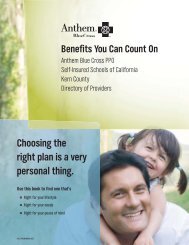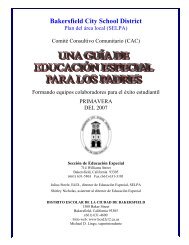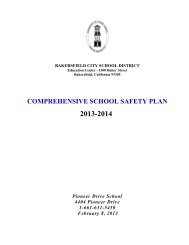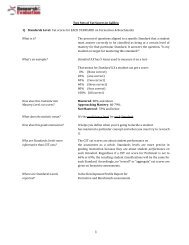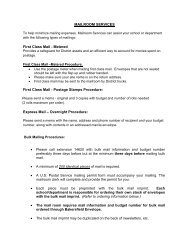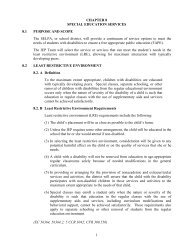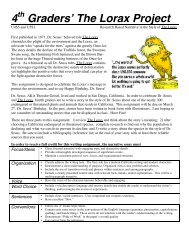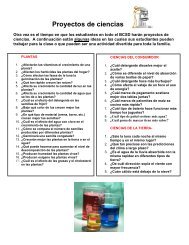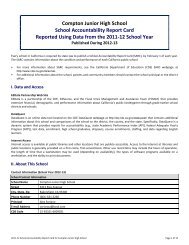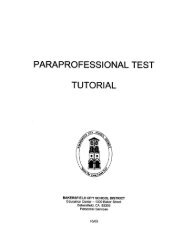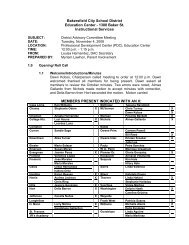Thorner - BCSD Static Server - Bakersfield City School District
Thorner - BCSD Static Server - Bakersfield City School District
Thorner - BCSD Static Server - Bakersfield City School District
Create successful ePaper yourself
Turn your PDF publications into a flip-book with our unique Google optimized e-Paper software.
Safe <strong>School</strong> Plan ContinuedEmergency Mental Health and Traumatic StressTips for Teachers:Marking Disaster Anniversaries in the Classroom[Note: This fact sheet was prepared as a resource to help children deal with normal recoveryissues that may be triggered by the anniversary of a disaster. The activities suggested here mightbe helpful as we anticipate and address issues that may emerge. It can be adapted for use withany disaster and can be used any time from the first day following the disaster to one or moreyears later.]Disaster anniversaries will cause many people to reflect and even re-experience thoughts, feelings,and events that occurred at the time of the attacks and in the days, weeks, and months thatfollowed.There will no doubt be a media flood of anniversary footage with images of the attacks, as well aspredictions for future terrorist events. This coverage will reactivate the feelings of people incommunities throughout the country.As a teacher, you have probably witnessed a wide range of reactions from children since thedisaster events. These responses can emerge or be reactivated by anniversary memories, images,and fears. In the classroom, you may observe increased activity levels, decreased attention spans,behavior and defiance problems, and even increased isolation and withdrawal. Some children maynot exhibit observable reactions. Others may have noticeable reactions that linger anywhere froma few days to a few weeks.The degree of a child's reaction will vary depending upon the experiences of the child and his orher family during the disaster. Even families who did not lose a loved one may have been affectedin other ways, such as economic shifts or hardships. Recent losses or traumatic events, as well asother factors related to the child's individual life experiences and unique make-up, also affectreactions.Classroom activities that focus on survivorship - what has been gained or learned since the disaster- are particularly encouraged. Story writing or artwork can help children compare their initialreactions to the disaster with where they are now. Going over school emergency plans fordisasters is also useful. Keeping an optimistic focus on the future can help to normalize reactions.As your students and the rest of the Nation mark the disaster anniversary, the activities listedbelow may be helpful in addressing recovery issues that an anniversary brings forth:Pre-<strong>School</strong> and KindergartenConstruct hats, serve cookies and drinks, and sing songs to commemorate the anniversary.Ask children to draw a picture of themselves and their families now, after the events.Encourage, but do not force, them to discuss and share their feelings.47



